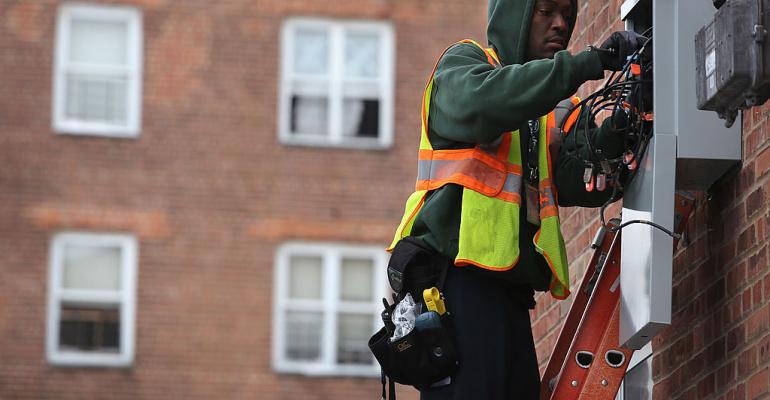From condominiums to office buildings to mixed-use properties, the dramatic increase in claims triggered by environmental incidents is affecting real estate properties of all types. Unexpected clean-up costs, regulatory fines and penalties, third party lawsuits, rental income loss, devalued properties and reputational damage are the direct causes of financial loss.
Clean-up costs of pollution events in particular have increased drastically in recent decades. For example, the cost to remediate 126,000 polluted groundwater sites monitored by the U.S. federal government—due to contaminants from underground storage tanks, military installations and industrial facilities—could range from $110 billion to $127 billion.
In addition, as environmental legislation and case law continue to change rapidly, real estate companies are finding it even more difficult to stay abreast of the environmental risk landscape. As a consequence, today’s real estate companies have urgent need for comprehensive environmental risk management that fully addresses their complex and evolving exposures.
Following are some common environmental liability exposures faced by real estate companies, especially mid-sized companies that generally do not have the expertise or resources to manage these risks effectively. Included are several strategies that can help companies avoid the financial hazards of escalating environmental liabilities.
Improper risk transfer
Many real estate firms overlook exposure from on-premises waste containers and the potential liability that could arise if materials in the container leak and impact first and third party properties. This could result in clean-up costs ranging from $100,000 to $5 million.
Recently, a real estate owner contracted for sanitation services with a national dumpster company. The dumpster company's standard contract did not provide any indemnification except for sole negligence. It further required the owner to indemnify the dumpster company for all other claims. With the inability to change the indemnification language in the contract, the company was recommended to purchase an environmental liability policy. Four months after policy inception, one of the tenants disposed of leftover solvents and used motor oil in a dumpster. The tenant’s actions resulted in a spill impacting a neighboring property, necessitating $375,000 in clean-up costs. Fortunately, the cost was fully covered by the environmental liability policy that had been previously placed.
Contractually transferred liabilities
The acquisition and sale of real estate assets often involves the transfer of environmental liabilities from one party to another. For older properties, with exposure to transferrable events, firms should look to employ a three-step process that includes: identifying, evaluating and understanding their exposures; reviewing indemnification agreements that apply to those exposures to determine assumed, retained or transferred environmental liabilities; and structuring pollution legal liability insurance to address the exposures.
In a recent case, a review and analysis of a firm’s exposures and coverage led to the recommendation that the company use a single carrier for both environmental and builders’ risk coverage for a renovation project. Soon after the real estate firm made the change, an apartment structure under renovation sustained fire damage, exposing asbestos insulation.
The pollution limit for asbestos on the builders’ risk policy was limited to $100,000 and the environmental policy provided $10 million in coverage. This policy structure eliminated the potential dispute between separate carriers as to what portion of the damages should be attributed to asbestos abatement and remediation versus fire damage and restoration. In addition, the single carrier approach enabled the company to achieve a quick resolution regarding the allocation between asbestos and fire damage, covering the $2 million cost.
Vapor intrusion exposures
Vapor intrusion, which involves the migration of volatile chemicals through subsurface soils and into indoor air spaces of overlying buildings, can expose occupants to chronic low-dose carcinogens. For real estate companies, particularly those involved in brownfield or greenfield redevelopment, vapor intrusion can create significant environmental liability exposure.
To help real estate firms mitigate this exposure, management should work with their broker to devise a comprehensive mitigation plan that includes: conducting environmental risk assessment and exposure analysis to determine site vapor intrusion; and implementing an effective remediation plan.
In one recent example, a large real estate development company reviewed a project that involved the demolition of old industrial properties and development of new multi-use buildings. The site was assessed and it was determined that remediation was needed for vapor intrusion due to past usage of chemicals on the site. Once the remediation was completed, pollution coverage was secured for the potential vapor intrusion liability cost of $2.5 million.
Pollution event at a building site
Real estate developers traditionally rely on general contractors to provide coverage for all site exposures when renovating or developing a site. However, inadequate or ineffective coverage obtained by the contractor can expose the developer to coverage gaps and possibly large financial loss. Contractors’ pollution liability insurance, which provides third-party coverage for bodily injury, property damage, defense and clean-up as a result of pollution conditions arising from contracting operations performed by or on behalf of the contractor, can help to mitigate this exposure.
Conclusion
Managing the qualitative and quantitative impact of environmental risks is a complex exercise and requires significant technical expertise. Ineffective or inadequate environmental risk management can lead to financial ruin for a real estate company. When dealing with sophisticated real estate operations, off-the-shelf solutions usually do not work. Rather, real estate companies need a risk partner who can help them assess and quantify their environmental obligations accurately while providing customizable solutions that fully address their unique exposures.
Brian Dove serves as national real estate practice leader with USI, an insurance brokerage and consulting firm, and is based in USI’s Dallas office. You can contact him at [email protected] or at (214) 443-3280. Visit www.usi.biz for more information.

